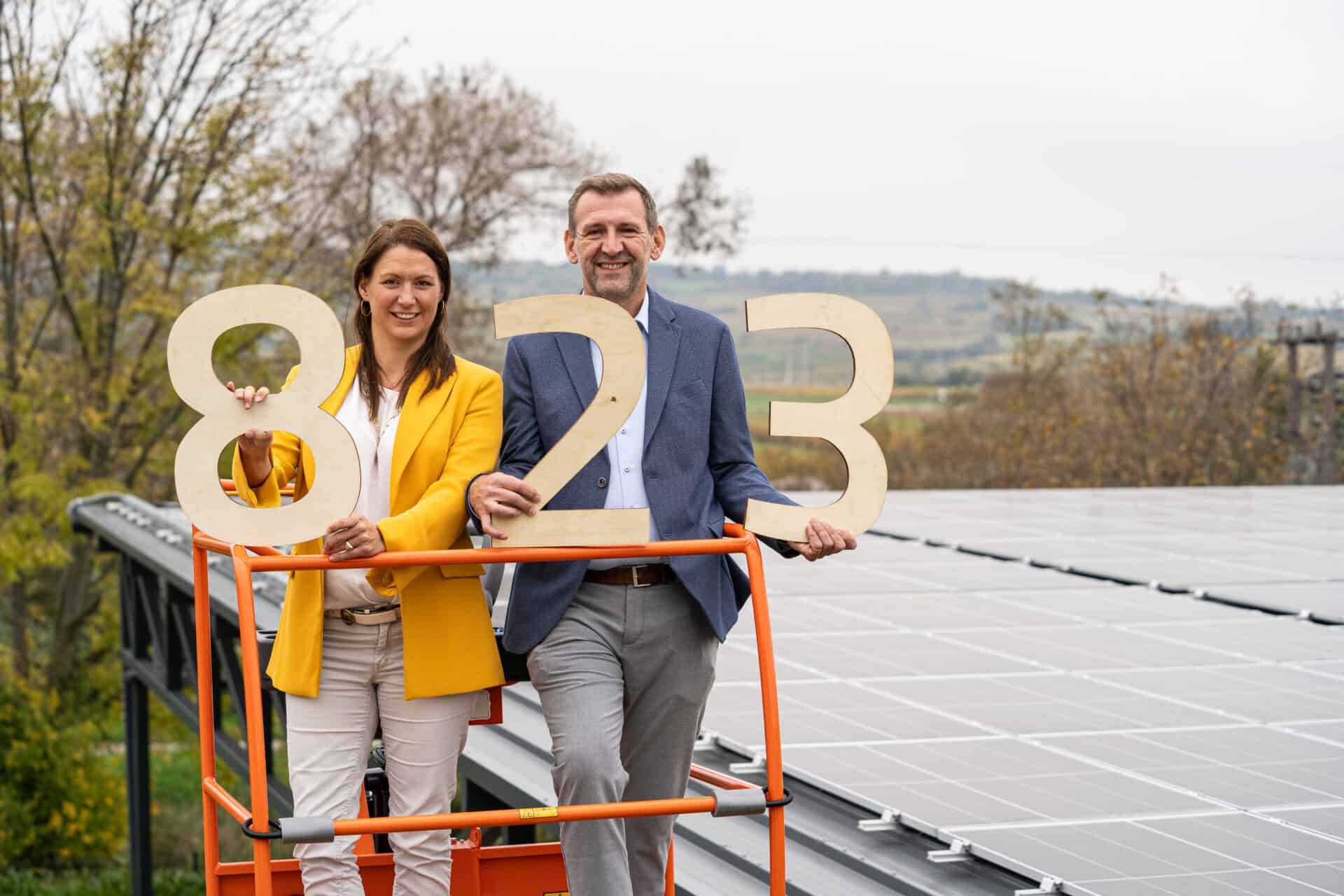It takes patience to reap the rewards of switching to solar power: Following the idea of installing a photovoltaic (PV) system on a carport at the KLINGER Holding site in Gumpoldskirchen, four years passed before it finally went online. With the first offers received in 2019, the system finally went into operation in May 2023. That’s quite a wait, considering that constructing the carport that was to hold the PV panels and installing the panels themselves took only four days.
Contacts mentioned in the article:
Christian Schachenhofer, Managing Director of Klingerpark
Scaling Up Solar
The long planning horizon and subsequent wait before the system finally went online testify to the complex process of realizing a large-scale installation like the one at KLINGER Holding. Klingerpark Managing Director Christian Schachenhofer was involved in the project right from the start: “We had initially planned for a smaller system and carport, but after looking at all the options, we decided to scale up.”

Photovoltaics at Work
The installation coincided with a huge rush on PV technology: In October 2022, high energy prices spurred both private individuals and companies to adapt solar power. Cornelia Daniel, the owner of the consulting firm Dachgold, had her hands full in those days: Her company calculates the profitability of PV systems for its clients and, together with their partner enterprise 10hoch4, helped KLINGER Holding implement its car park installation. “Once the system was completed, it took another six months for the grid operator to provide us with a metering point and issue authorization for us to produce solar power. At that time, everyone wanted to get on the grid,” says Cornelia.

Carport Powers Production and Mobility
The wait was worth it: Today, KLINGER draws around ten percent of the electricity consumed at the holding company’s Gumpoldskirchen site from its own PV system. “Our demand is around one megawatt and goes mainly to running our production machines, such as rollers, calenders and CNC milling machines. Some of the solar power is used to charge our fleet of electric vehicles,” says Christian. The new carport boasts six charging stations, with the option of expanding to ten. Expanding the PV capacity is also being considered at Gumpoldskirchen: suitable roof surface is available, although it would first have to be renovated and structurally reinforced.
Fact box
Sustainable Savings
The system as it stands will easily recoup its installation costs: generating electricity far below the market price, it feeds into Klingerpark’s internal power grid and is used entirely on site. “We don’t generate any surplus electricity that can be fed into the public grid. Even at weekends, our cooling systems use up all the available solar power,” says Christian. No wonder, then, that he does not loose any sleep over rising energy prices: investing around 110,000 euros in the PV system was “the right decision”.

Frequently asked questions (FAQ)
What is the capacity of the PV system at KLINGER Holding?
The installation can generate up to 113 kilowatts with an annual energy yield of around 120 megawatt hours, which corresponds to the average electricity demand of 30 single-family homes.
How much roof area does the PV system cover?
The carport’s entire 642 square meters of roofing is covered with photovoltaic panels. That’s around 270 modules, each of which delivers up to 405 watts of electricity at peak sunshine.
Were there any subsidies for the PV system?
KLINGER Holding received around 10,000 euros in federal funding (EAG capital investment grant), which covered about ten percent of the investment costs.


